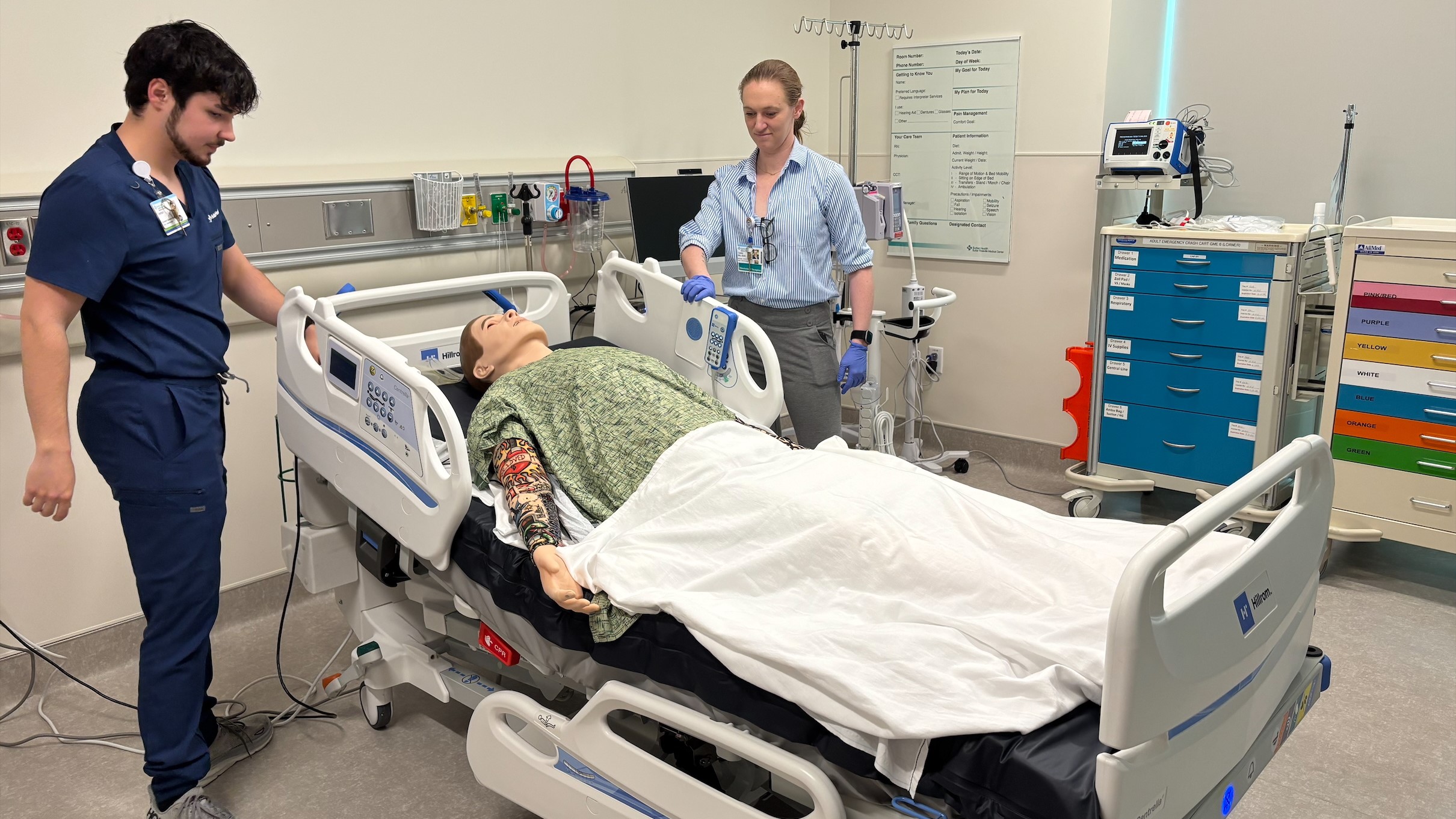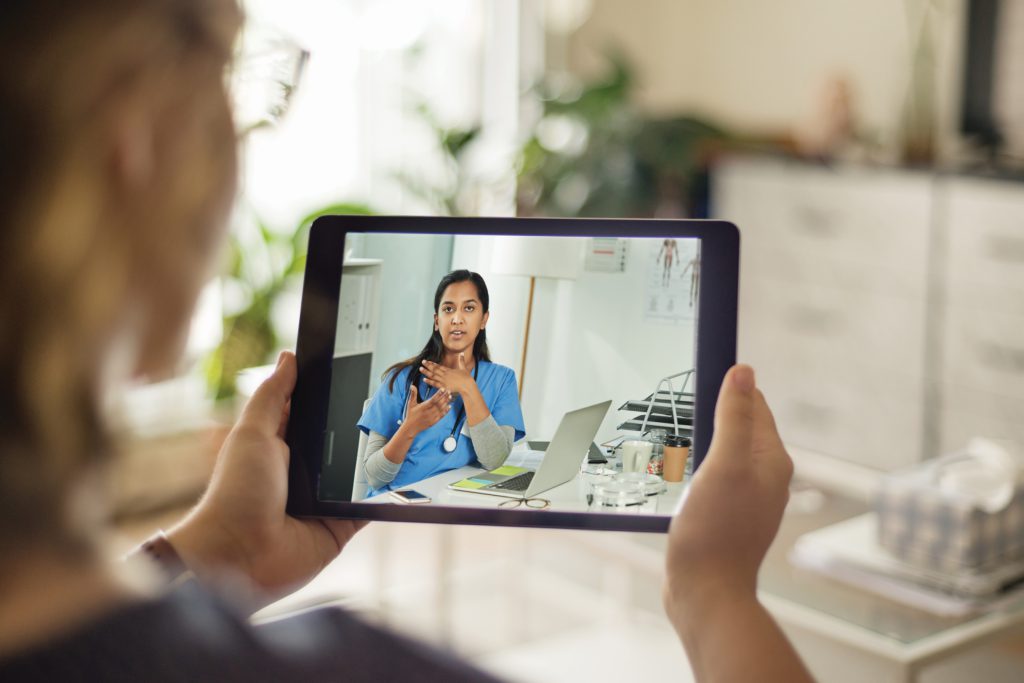Casey Bell, right, and Trenton Jones lead the simulation trainings at Sutter Roseville Medical Center’s simulation lab which feature realistic manikins for trainees to practice on.
The patient on the operating table may not be real, but Dr. Andrei Callejas’ heart rate still rises as if it were.
Dr. Callejas, a second-year resident in Sutter Health’s Graduate Medical Education Program, is treating a manikin—a full-body patient simulator called Ted, at Sutter Roseville Medical Center’s simulation lab. And he’s taking this practice case just as seriously as he would a real case in the emergency room.
Sutter’s newest simulation lab is a state-of-the-art space that provides GME Program residents like Dr. Callejas with an immersive—and highly realistic—learning experience in a safe and controlled environment. The sim lab is an example of Sutter’s continuing focus on providing growth and development opportunities for clinicians—through robust learning and training, career pathways and leadership programs—so that care team members can continuously build skills and realize their personal and professional aspirations.
“We see critically ill patients in the Emergency Department so that’s also what we’ll see in the simulation lab,” says Dr. Callejas. “This helps us practice and learn from those cases. The equipment is great —it’s the same as what we use every day. The sessions in the sim lab are recorded so we can review each case as a team in the debrief rooms and go over teaching points.”
High-Tech Learning Space
Sutter Health University’s Simulation Program, which was launched in 2009, is accredited by the Society for Simulation in Healthcare and holds over 4,700 simulation training experiences annually.
In July 2024, Sutter expanded the program to Sutter Roseville to provide clinicians with even greater access to on-the-job learning and professional growth opportunities. The 5,676 square foot space features large and small hospital patient rooms, four patient exam rooms, a virtual reality room for surgery and a full complement of medical equipment to help simulate a variety of healthcare scenarios. Two life-like high-tech manikins—complete with tattoos—add to the realism.
“If we don’t do chest compressions correctly on the manikin, it will tell us,” says Dr. Callejas. “That immediate feedback helps us learn the right way to do things very quickly.”

Two control rooms allow Sim Lab staff to monitor and manipulate the training scenario in each patient room.
Sutter Roseville’s sim lab tech team uses two control rooms—one for the large patient rooms, the other for the exam rooms—to create a variety of realistic clinical situations and learning experiences.
“The pace in the sim lab is definitely intense,” says Dr. Callejas. “The tech team does an excellent job of creating real life scenarios.”
Since the beginning of this year, the simulation lab has held more than 500 simulations.
“We are very pleased with the response we have received from clinicians across Sutter who appreciate this opportunity to expand their knowledge and use the sim lab to further their education,” says Kaitlynn Thurman, senior director of Education, Clinical Development and Simulation at SHU. “Our team works collaboratively with clinical nurse educators and other subject matter experts to develop relevant content that benefits our clinicians.”
In early 2026, Sutter will launch a mobile simulation unit that will help further expand these realistic learning opportunities across the organization.
“In the sim labs, we hear different perspectives, learn from successes and failures and share best practices,” says Thurman. “Investing in these types of workforce and clinician development programs and leadership advancement opportunities is essential to attracting and retaining talented clinicians and building a pipeline for critical-to-fill clinical and leadership roles.”





